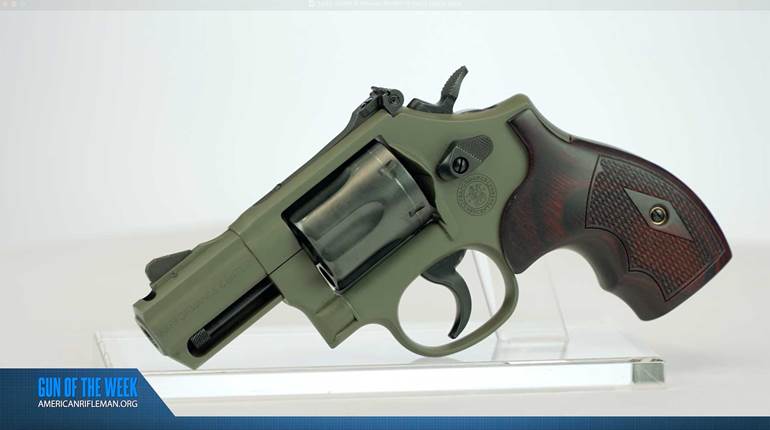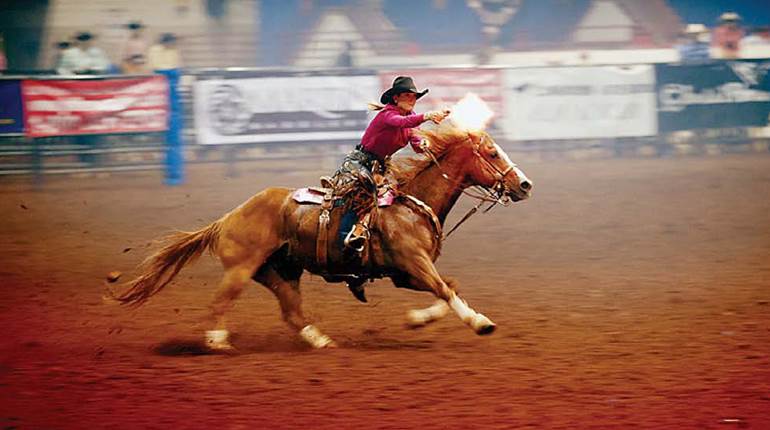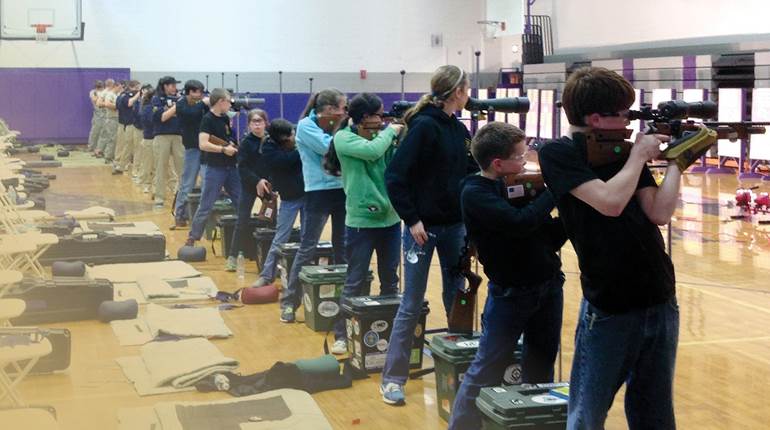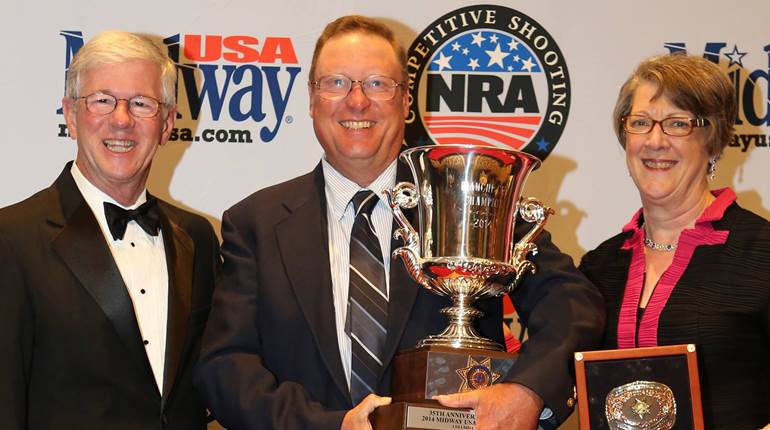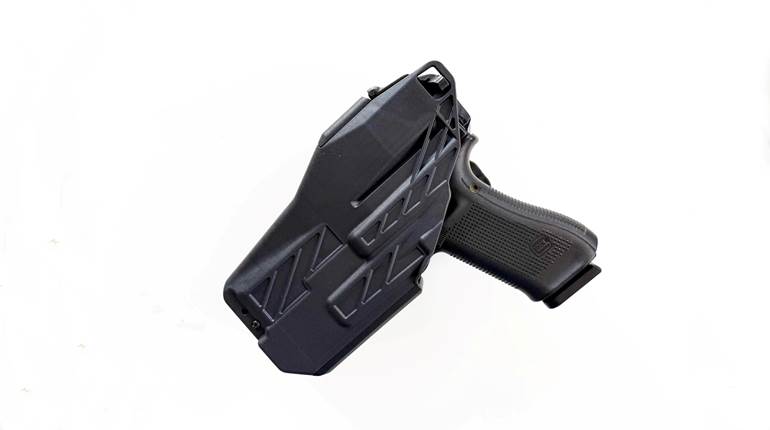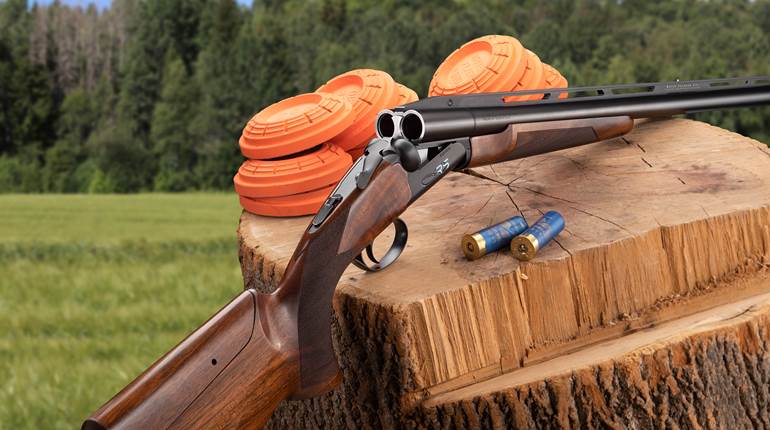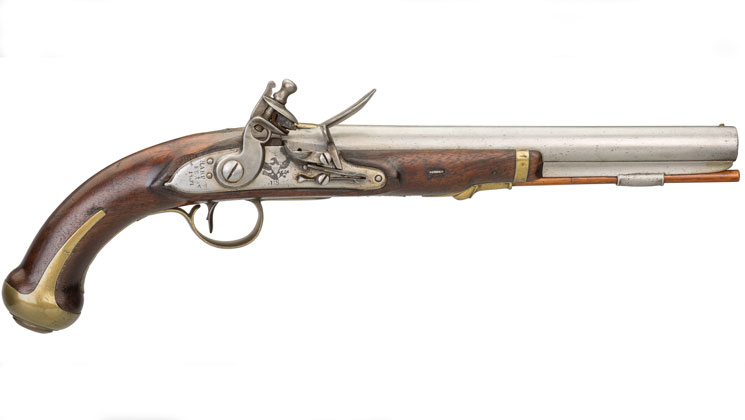
Following the disbandment of the Continental Army in 1784, the United States kept only a token force of regulars to guard arsenals and frontier forts along the border. In the fledgling years of the American Republic, the government struggled to balance national-security needs with the inherent distrust Americans held toward standing armies. Tied up in this tug-of-war was the establishment of national armories for the production and storage of U.S.-made military arms.
However, events in the 1790s made it clear that some force of U.S. regulars was needed, and having a steady supply of domestically produced arms was a priority for these troops. From this need, the Model 1805 Harpers Ferry pistol would eventually be born.
Much like modern military sidearms, pistols of the late 18th century and early 19th century were not viewed as frontline service arms. Rather, they were produced and issued for use in specialized roles, particularly for messengers, scouts, naval boarders and cavalrymen. However, the fluctuating size of the country’s standing military made it difficult to determine exactly what kinds and amounts of arms were needed to supply these troops.
Due to the ambivalent nature of Congress to authorize any kind of standing force, the official military force of the United States took several forms in the 1790s. The first, a skeleton frontier force deemed the First American Regiment, was halfheartedly supported by Congress and retained the leftover arms of the Revolution. The embarrassing rout of the First, supported by Kentucky militia, at the Battle of the Wabash led to the formation of the Legion of the United States and also coincided with some of the first contract guns produced for military use in the post-Revolution republic, namely the contract rifles of 1792 and 1794.
Reproduction of a Model 1795 rifle
Composed of trained career soldiers and led by Gen. Anthony Wayne, a career military man, the Legion consisted of four Sub-Legions with a combined-arms structure consisting of two battalions of infantry, a rifle battalion, a dragoon troop and an artillery battery. Now that infantry, skirmishers, cavalry and artillery were officially part of the standing military structure of the United States, a steady supply of arms were needed to outfit each of these unique branches.
As newly founded national armories at Springfield, Mass., and Harpers Ferry, Va., began construction, contract guns filled the gaps as the United States Regular Army started to take shape around the turn of the 19th century. From the outset, dragoons were a critical contingent of this fighting force, with four troops of Light Dragoons being split between four Sub-Legions, and two companies of Light Dragoons making up the later “Military Establishment of the United States” formed in 1796.
While these fast-moving units of horse-mounted infantry were primarily armed with musketoons and carbines, dedicated horse pistols were also critical components of a well-armed cavalryman. From 1796 to 1805, dragoons remained an important component of the small U.S. Regular Army, and these troops required purpose-built pistols to adequately fulfill their role. Toward this end, U.S. Secretary of War Henry Dearborn issued a contract on November 13, 1805, for 4,000 .54-caliber pistols to be produced at the Harpers Ferry Armory.
Model 1805 Harpers Ferry pistol (right side view)
At the receiving end of the contract was Joseph Perkin, first superintendent of the Harpers Ferry Armory. Aged 68 in 1805, Perkin was in the twilight of a 40-year career as an ardent patriot and talented gunsmith. Born near Birmingham, England, and baptized in February of 1737, he likely learned the finer points of the firearm industry through the tutelage of either his father, a gunlock filer in West Bromwich, or as an apprentice in one of the numerous gunsmiths in the Birmingham area during the mid-18th century. As he refined his skills, Perkin specialized particularly in the building of gun locks.
Model 1805 Harpers Ferry pistol (left side view)
In 1771, Perkin traversed the Atlantic, arriving first in New York City then Philadelphia, continuing his work as a gunsmith. The simmering sentiments of revolution boiled over on April 19, 1775 as minutemen fired shots at British regulars on the village green of Lexington, Mass., and patriots across the colonies mobilized to arm and supply the fight for independence. Exactly six months later, an ad appeared in The Pennsylvania Evening Post, calling on gunsmiths to travel south to the Rappahannock Forge in Fredericksburg, Va., to supply arms for the revolution. That fall, Perkin moved south and began producing gun locks for the Forge, returning to Philadelphia three years later.
Simultaneously, the British Army abandoned its position in Philadelphia in 1778, prompting the Continental Congress’ Board of War to establish a Continental Armory in the city for the production and repair of guns. Perkin submitted his name for consideration as superintendent of the new armory, citing the leadership role he played in getting the Rappahannock Forge running. In March 1779, Congress appointed Perkin superintendent, and the repair and assembly of arms from pre-fabricated parts began in 1780. In the two years of the Armory’s operation, Perkins oversaw the repair of more than 5,500 muskets, as well as the assembly of several thousand more.
The winding-down of the Revolution saw Congress cut funding for Perkin and the 29 men he employed at the Continental Armory, and eventually, the government shuttered the facility. In the years following the war, Perkin continued to make a living as a gunsmith in the service of the U.S., cleaning and repairing firearms in the U.S. arsenal, as well as producing firearms for civilians.
One particular pistol of note can be found in the collection of Craig D. Bell, produced by Perkin for his friend Samuel Hodgdon sometime between 1781 and 1785 and highlighted in, “Joseph Perkin Arms the Revolution” by Matthew Skic, an article found in Vol. 115 of the “American Society of Arms Collectors” publication. One particular component to notice about this pistol is the slender profile of the pistol’s grip, curving gracefully down to blend with a rounded buttcap in a spherical meld of brass and wood. A similar construction and profile will be used 20 years later as Perkin designs the Model 1805 Harpers Ferry pistol.
However, before work could begin on the Model 1805 Harpers Ferry, the Harpers Ferry Armory had to be established, of course, and Perkin was tapped by his friend Hodgdon, superintendent of military stores for the War Department in the early 1790s, to participate in the reestablishment of government arsenals. Perkin first served as operations manager at the New London Arsenal in Virginia in 1792, and in 1798, the Secretary of War selected him to superintend the establishment of the new federal armory at Harpers Ferry.
Once the armory sprang into operation in 1801, Secretary of War Henry Dearborn first asked Perkin to submit a design for a short-barreled rifle that measured no more than 33 inches in length and fired a ball “one-thirtieth of a pound in weight, about .54 caliber.” Together with a team of armorers, Perkin submitted the design that would become the Model 1803 rifle, a design that must be seen to fully appreciate the later development of the Model 1805 Harpers Ferry pistol.
Harpers Ferry Model 1803 rifle
A suitably impressed Dearborn submitted a contract for 4,000 rifles, followed by the November 1805 contract for 4,000 .54-caliber pistols. In many respects, the design of the pistol follows closely with the rifle, notably featuring the steel-rib extension bridging the gap between the end of the pistol’s half-stock design and the muzzle. The Perkin influence on the design is clear, both from the elements incorporated from the Model 1803 rifle and those elements seen in prior pistols produced by Perkins. An element that especially stands out is the brass cap complete with 3-inch extensions stretching toward the lockplate on either side of the butt. The brass cap also blends into the contoured wood along the rear strap of the wood butt, another feature found in past Perkin guns.
Some confusion exists on the proper nomenclature of these pistols. Some call them the Model 1806 Harpers Ferry pistols, while others call them the Model 1805, and guns can be found with date stamps ranging from 1806 to 1808. The confusion comes, in part, due to the contract date and corresponding lockplate stamps found on the guns. Dearborn issued a contract for 4,000 pistols in 1805, just like he ordered a contract of 4,000 rifles in 1803. In both cases, the contracts were not fulfilled until 1808 and 1807, respectively.
Therefore, the proper designation of the gun is the Model 1805. However production on the gun’s components did not start until 1806, and even then, only a select few 1806-dated locks were made. Available resources seem to point to the fact that eight Harpers Ferry pistols were assembled in 1806, though it seems a larger number 1806-dated locks were produced, only to be assembled the following year. Serial numbers as high as 23 have been observed on 1806-dated pistols.
The year 1807 saw the most Harpers Ferry pistols produced by the armory, with a total of 2,880 guns produced, and the following year finished the contract, with 1,208 guns produced in 1808 for a likely total of 4,096 guns. Surviving examples are seen with serial numbers no higher than 2,048, corresponding with paired-pistol production with duplicate serial numbers that, when doubled, add up to a total production number of 4,096.
Date and armory stamping on a Model 1805 lockplate
The last Model 1805 Harpers Ferry pistols entered military service just as Congress authorized an increase in the size of the Regular Army, adding the Regiment of Light Dragoons to the rolls on April 12, 1808. A second regiment of dragoons joined the first in 1812. Though both regiments were active during the War of 1812, neither fought as a consolidated unit. Each was used instead in piecemeal form as escorts, messengers and scouts. At the conclusion of the war, a downsizing of the army led to the consolidation of the dragoon and artillery contingents of the army. The dragoons would not be revived as a separate contingent of the U.S. military until March 1833.
By that point, the newest of the Model 1805 Harpers Ferry guns were reaching 25 years old, and thousands of private-contract guns had been ordered in the intervening years to fill dwindling supplies of the guns, probably issued mostly to scouts and frontier units in the decades after the War of 1812. Unfortunately, the slender, graceful construction that makes the Model 1805 arguably one of the most-beautiful, well-balanced martial pistols of the 19th century also made it somewhat fragile, and many were used until they became irreparable.
Those that survived decades of harsh use bear evidence of armory upgrades throughout the years, with brazed brass sights found on several long-serving examples, as well as others fitted with percussion-ignition systems after flintlock mechanisms were made obsolete in the 1830s. Despite these upgrades, the guns themselves were long past any frontline service.
From 1808 on, the U.S. military relied heavily on private-contract pistols to arm its troops, with Simeon North leading the way. Under the contracts of 1816 and 1819, specifically, he supplied the government with more than 40,000 pistols. Future contracts included North’s Model 1826, with subsequent copies by W.L. Evans. The last of U.S. martial flintlocks arrived with the Model 1836, with 15,000 produced by R. Johnson and 19,000 produced by A. Waters & Co.
Simeon North Model 1816
Today, fewer than 300 examples of the Model 1805 Harpers Ferry survive, including the last pair produced by the armory in 1808, sold by James D. Julia Auctioneers in October 2017 for $28,750. In recent years, single examples of the Model 1805 Harpers Ferry pistol have sold for four figures, including serial-number 1,034 for $9,200 in December 2010 and serial-number 1,642 for $9,775 in 2012.
 However, despite its relatively anemic service history, the Model 1805 Harpers Ferry pistol remains one of the most-recognizable of U.S. military pistols, due largely to the establishment of a permanent Military Police Corps. Congress allowed for the development of perpetual MP units starting in 1920, and in 1922, an insignia had to be chosen to distinguish the men. Initially, crossed clubs were chosen, but these were too easily confused for the crossed cannons of the artillery corps. Finally, the distinct insignia featuring crossed Harpers Ferry Model 1805 pistols was selected and has remained the emblem of the United States Military Police Corps to the present day.
However, despite its relatively anemic service history, the Model 1805 Harpers Ferry pistol remains one of the most-recognizable of U.S. military pistols, due largely to the establishment of a permanent Military Police Corps. Congress allowed for the development of perpetual MP units starting in 1920, and in 1922, an insignia had to be chosen to distinguish the men. Initially, crossed clubs were chosen, but these were too easily confused for the crossed cannons of the artillery corps. Finally, the distinct insignia featuring crossed Harpers Ferry Model 1805 pistols was selected and has remained the emblem of the United States Military Police Corps to the present day.
Additional Reading:
Model 1805 Harpers Ferry Pistol: Building the Davide-Pedersoli Kit
The Model 1805 Harpers Ferry Pistol: Launching the Reproduction Era
Arsenals and Armament: The Early Years of U.S. Martial Pistols












